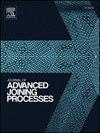Effect of bonding temperature on microstructure and mechanical properties of TLP-bonded Ti-6Al-4V/Inconel 718 joints using BNi2/Cu interlayer
IF 4
Q2 MATERIALS SCIENCE, MULTIDISCIPLINARY
引用次数: 0
Abstract
The joining of Ti-6Al-4 V to Inconel 718 is notable in industries. This research studied the effect of bonding temperatures (800, 850, 900, 950, and 1000 °C) on properties of Ti-6Al-4 V and Inconel 718 joints using BNi2/Cu interlayer in TLP bonding. The samples were analyzed for their microstructure and mechanical properties using a range of techniques: optical microscopy (OM), scanning electron microscope (SEM), X-ray diffraction (XRD), microhardness testing, shear strength evaluation, and high-temperature shear tests. Microstructural analysis indicated the formation of intermetallic compounds like Ti2Cu, Ti2Ni, NiTi, and Ni3Ti within the diffusion-affected zone (DAZ) and solidification zone (SZ) of the TLP-bonded samples. The results demonstrated that temperature had a profound impact on the microstructure of the TLP-bonded samples; specifically, the width of the solidification zone increased as the TLP temperature rose. Moreover, there was an optimal temperature for achieving superior mechanical properties. For instance, a shear strength of 399.75 MPa was achieved at 950 °C as the highest shear strength value. The findings also revealed that both lower (800 °C) and higher (1000 °C) bonding temperatures led to decreased shear strength due to the presence of porosities and cracks. The high-temperature testing showed suitable mechanical properties for elevated temperatures.
结合温度对BNi2/Cu夹层Ti-6Al-4V/Inconel 718 tlp结合接头组织和力学性能的影响
ti - 6al - 4v与Inconel 718的结合在工业中是值得注意的。本研究研究了焊接温度(800、850、900、950和1000℃)对TLP结合中BNi2/Cu中间层ti - 6al - 4v和Inconel 718接头性能的影响。利用光学显微镜(OM)、扫描电镜(SEM)、x射线衍射(XRD)、显微硬度测试、抗剪强度评估和高温剪切测试等一系列技术对样品的微观结构和力学性能进行了分析。显微组织分析表明,在tlp结合试样的扩散影响区(DAZ)和凝固区(SZ)内形成了Ti2Cu、Ti2Ni、NiTi和Ni3Ti等金属间化合物。结果表明:温度对tlp结合样品的微观结构有较大影响;随着TLP温度的升高,凝固区宽度增大。此外,还存在获得优异力学性能的最佳温度。在950℃时抗剪强度最高,达到399.75 MPa。研究结果还表明,较低(800°C)和较高(1000°C)的结合温度都会导致剪切强度下降,这是由于孔隙和裂纹的存在。高温试验表明,该材料在高温下具有良好的力学性能。
本文章由计算机程序翻译,如有差异,请以英文原文为准。
求助全文
约1分钟内获得全文
求助全文

 求助内容:
求助内容: 应助结果提醒方式:
应助结果提醒方式:


